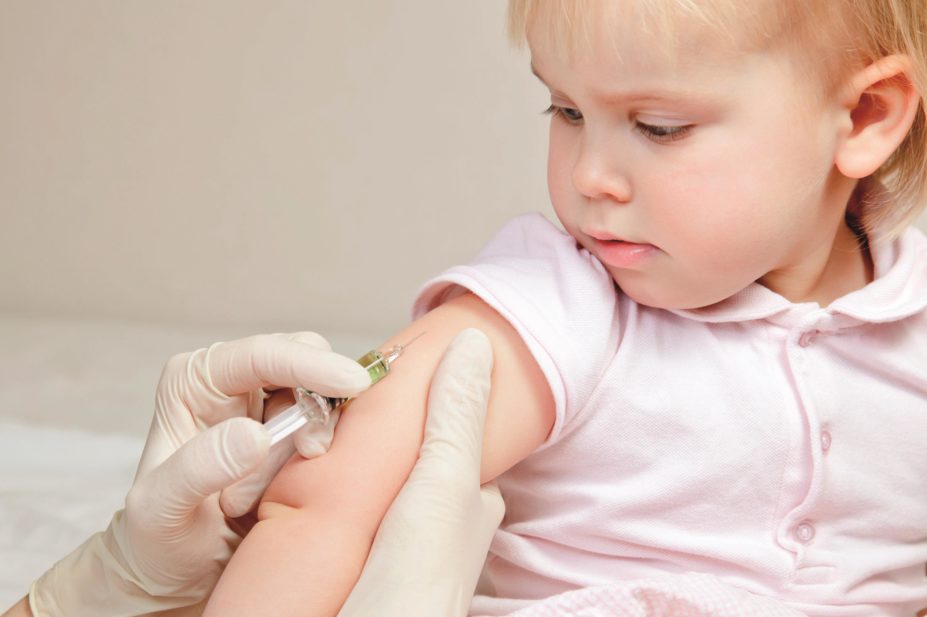
Shutterstock.com
Colds, flu and other minor infections may temporarily raise the risk of stroke in children, while routine childhood vaccines may reduce the risk, according to research published in Neurology, the medical journal of the American Academy of Neurology[1]
.
Researchers conducted an international study that included 355 patients under 18 with confirmed cases of arterial ischemic stroke and 354 children of similar ages who had not suffered a stroke.
The scientists reviewed the medical charts of the children diagnosed with stroke, and interviewed their parents in order to determine whether the children had been exposed to infection and establish their vaccine history.
The study, published on 30 September 2015, found that 18% of participants who had suffered a stroke had an infection the week before the stroke occurred, compared with 3% of the children who did not go on to have a stroke, conferring a 6.3-fold increased risk of stroke among those who had had infections in a prior week.
Upper respiratory infections were the most common type in those who went on to have a stroke after infection.
“Parents should be reassured that while the risk was increased, the overall risk of stroke among children is still extremely low,” said José Biller of the Loyola University Chicago Stritch School of Medicine, a Fellow with the American Academy of Neurology, in an editorial that accompanied the research.
“It is possible that changes in the body as a result of these infections, such as inflammation and dehydration, could tip the balance in a child who is already at a higher risk for stroke,” he said. “Parents should not be alarmed if their child has a cold that it will lead to stroke.”
Vijeya Ganesan, a senior lecturer in paediatric neurology at University College London, says: “It’s a really important study in the field. Although the connection between infection and is stroke has been suggested by previous studies, this is really a well-designed study and we know that the findings are robust.”
The risk of stroke was increased only for infections suffered during the prior week, the researchers found, suggesting that the impact of infection on stroke risk is temporary. Infections that occurred a month or six months prior were not associated with an increased risk.
In addition, the study found that children who were poorly vaccinated were at higher risk of stroke than those who had most or all of their routine vaccinations. Those who had received some, few or none of their vaccinations were seven times more likely to have a stroke than those who received most or all of their vaccinations. A total of 8% of children who had strokes were poorly vaccinated, compared with just 1% of those who did not have strokes.
Ischaemic stroke affects at least 2.4 per 100,000 children a year, and major infections – such as bacterial meningitis and sepsis – have long been associated with arterial ischaemic stroke in children, the study’s authors noted. Minor infections, which occur more frequently, have been linked to arterial ischaemic stroke risk in adults.
An earlier, retrospective case-control study in Northern California found that a minor infection increased arterial ischaemic stroke risk 15-fold over a three-day period, and that the risk factor was identified in 10% of childhood arterial ischaemic stroke cases[2]
.
But the earlier study was limited by its narrow geographic region. The current study has a larger sample size, broader geographic representation, prospective enrolment and a central review of brain imaging to confirm the stroke cases.
References
[1] Fullerton HJ, Hills NK, Elkind MSV et al. Infection, vaccination, and childhood arterial ischemic stroke: results of the VIPS study. Neurology 2015. doi:10.1212/WNL.0000000000002065
[2] Hills NK, Sidney S & Fullerton HJ. Timing and number of minor infections as risk factors for childhood arterial ischemic stroke. Neurology 2014;83:890–897. doi:10.1212/WNL.0000000000000752


